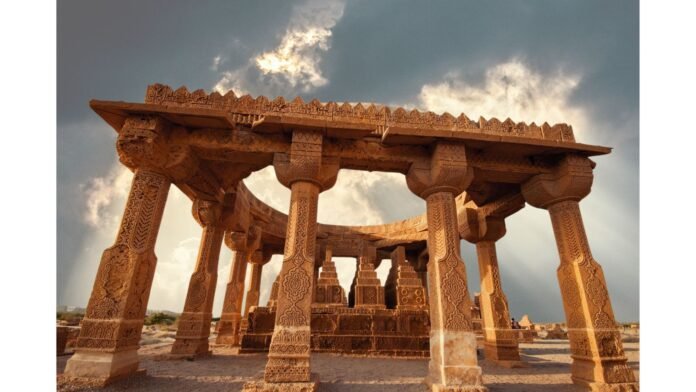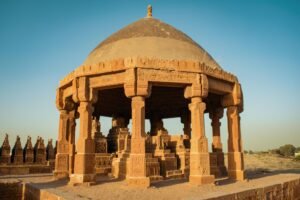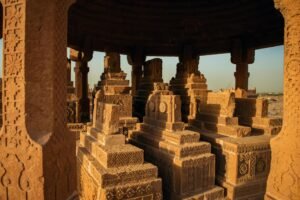On the windswept plains of Sindh, where th e golden sandstone of the Chaukhandi Tombs catches the dying light, a love story lingers—half-remembered, half-whispered. Jam Murid, a Samma warrior, and his forbidden love for a Jokhio chief’s daughter. She was bound by duty, by lineage, by the rigid confines of tribal law. But love is a reckless thing. They tried to elope, sparking a deadly pursuit. Murid, struck down, his story etched not just in memory but in stone. His tomb, they say, lies among the many in this ancient necropolis.
To walk among the Chaukhandi Tombs is to walk through history — where every carved stone whispers a story of a life lived.
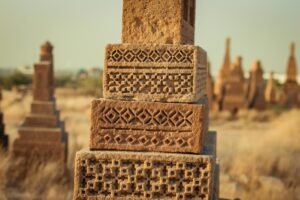
The Chaukhandi Tombs is a funerary site near Karachi, Sindh which is renowned for its intricately carved yellow sandstone tombs. Dating back to the 15th century and beyond, these tombs stand out for their unique sandstone architecture with carvings displaying a blend of regional, Islamic and Pre Islamic motifs.
The Chaukhandi tombs are a remarkable example of Sindhi tomb architecture. Most of these tombs have a distinct pyramidal shape, featuring a broad base that narrows at the top across stepped levels.
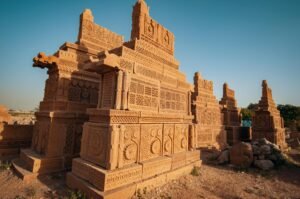
The sarcophagi at Chaukhandi are adorned with some of the finest stone carvings and motifs in the region, similar in style to those found at the Makli Necropolis in Thatta. These carvings include intricate geometric patterns, figures, and regional symbols.
Interestingly, certain tombs have carvings that distinguish male and female graves. Male graves often display images of horsemen with weapons such as shields, swords, bows, and arrows, while female graves are adorned with representations of jewelry, including bracelets, necklaces, rings, and anklets.

Recognized for their historical and artistic value, the Chaukhandi Tombs are listed on UNESCO’s Tentative List of World Heritage Sites.
Challenges to Preservation: The Silent Decay of Heritage
Today, the Chaukhandi Tombs face numerous threats — neglect, natural erosion, urban encroachment, and even vandalism. Time and weather have taken a heavy toll on many of the carvings, blurring the beautiful details etched centuries ago.



